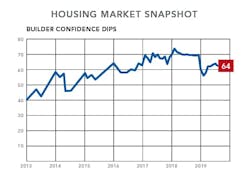Addressing the Opioid Epidemic in the Home Building Industry
Earlier this year, the National Safety Council, a nonprofit organization that promotes health and safety in the U.S., reported that the lifetime odds of dying by accidental opioid overdose are 1 in 96, marking the first time expected drug deaths surpassed the odds of dying in a motor vehicle accident.
Opioid addiction often begins with painkillers, such as OxyContin or Vicodin, taken for pain after an injury. If a patient isn’t careful, they can become dependent on the medication, prompting a search for more powerful versions of the drug, such as heroin or the deadly fentanyl.
For some in the construction industry, the desire to get back to work quickly leaves them with few options other than to manage the pain of injury before it’s fully healed. But the risk of re-injury is high, often necessitating more painkillers.
As a result, construction workers are more likely to become addicted to opioids than other workers in the general population and six times more likely to die as a result of overdose. Construction is the second leading industry for drug addiction, with twice the rate of substance use disorders than the national average.
The National Association of Home Builders (NAHB) convened a working group last year to research the impact of opioids in the home building industry, specifically, and explore ways to address the problem. In June, NAHB published a comprehensive set of resources for home builders, subcontractors, HBAs, and public health advocates. The materials can be found at nahb.org/opioids.
NAHB is taking an innovative approach to addressing opioid use and misuse by viewing the problem holistically and creating solutions and educational resources that address intervention points across the spectrum of prevention, treatment, recovery, and return-to-work. Getting workers safely back to work, rather than immediately dismissing them at the first sign of addiction, is the main goal of the materials.
In an industry already struggling with labor shortages, simply turning away workers in their time of need seems impractical on every level. Recognizing the signs of addiction, practicing open communication, and developing and implementing strategies to help workers is the best way to combat this public health crisis.
NAHB Housing Policy Briefing | The National Association of Home Builders is a Washington, D.C.-based trade association representing more than 140,000 members involved in home building, remodeling, multifamily construction, property management, subcontracting, design, housing finance, building product manufacturing, and other aspects of residential and light commercial construction.
Access a PDF of this article in Professional Builder's August 2019 digital edition




